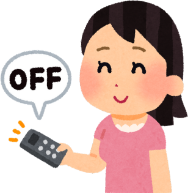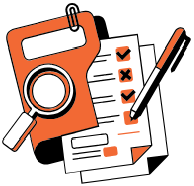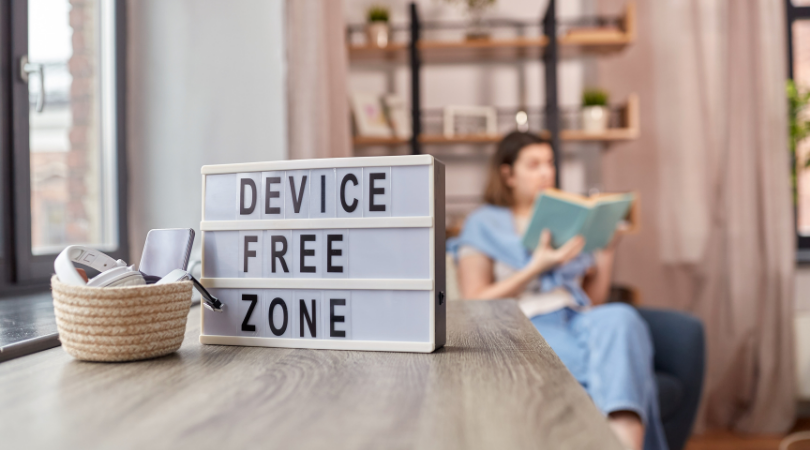In today’s hyper-connected world, we often reach for our phones before we even get out of bed, respond to emails while eating, and scroll through social media late into the night. Digital technology has revolutionized how we live, work, and communicate—but constant connectivity comes at a cost.
Overuse of digital devices has been linked to increased stress, burnout, poor sleep, reduced focus, and even anxiety or depression. If you find yourself feeling mentally drained, emotionally distracted, or simply tethered to your screen, it might be time to take a step back.
That’s where a digital detox comes in.
This guide offers practical, proven tips to help you unplug, recharge, and build a more mindful relationship with your digital life.
What Is a Digital Detox?
A digital detox is the intentional act of stepping away from digital devices – especially smartphones, tablets, computers, and even smartwatches – for a specific period of time to help you reset your mind, restore balance, and reclaim your time. The purpose isn’t to abandon technology altogether, but rather to create space for reflection, reduce digital dependency, and develop a more mindful approach to screen time. By disconnecting from the constant pings, scrolls, and notifications, a digital detox allows you to reconnect with yourself, your surroundings, and the people around you.
Why You Might Need a Digital Detox
You might need a digital detox if you’ve started to notice subtle (or not-so-subtle) signs that your relationship with technology is affecting your well-being. For example, if scrolling through social media leaves you feeling anxious, inadequate, or mentally drained, it could be a signal that your screen time is taking an emotional toll.
Many people also struggle with poor sleep caused by late-night exposure to blue light or the habit of checking notifications right before bed.
If you find yourself reaching for your phone out of reflex—even when there’s no real reason to—this habitual behavior might be disrupting your focus and pulling you out of the present moment. Over time, this can lead to reduced productivity, shorter attention spans, and a persistent sense of distraction.
Perhaps most importantly, heavy digital use can create emotional distance from those around you, replacing face-to-face connection with virtual interactions. If any of this sounds familiar, a digital detox could be a powerful first step toward regaining clarity, balance, and more meaningful offline relationships.
Digital Detox Tips: How to Do It Right
1. Set Clear Goals
Before beginning a digital detox, it’s important to set clear and intentional goals. Ask yourself why you want to take this break—are you looking to reduce stress, improve your
2. Start Small
Don’t feel pressured to quit all screens at once, especially if your work
3. Schedule Tech-Free Time
One of the most effective ways to ease into a digital detox is to schedule dedicated tech-free time each day. By intentionally setting aside time to be completely unplugged, you create space for mental clarity and emotional reset. Use this offline window to engage in calming or enriching activities such as meditating, taking a walk in nature, reading a physical book, cooking a meal from scratch, or exploring a new hobby that doesn’t involve a screen. The key is consistency—treat this time as non-negotiable, just like any important appointment. Over time, these intentional breaks can help retrain your brain to find joy and focus away from constant digital stimulation.
4. Turn Off Notifications
Notifications are intentionally designed to capture your attention and
5. Use Tech to Beat Tech
Ironically, technology itself can be a useful ally in your digital detox journey. 
6. Create Device-Free Zones
Creating device-free zones in your home is a simple but powerful way to reinforce healthier tech boundaries. Designate specific areas where screens are not allowed, such as the bedroom, to improve sleep quality and eliminate the temptation to scroll late at night. Replacing your phone with an old-fashioned alarm clock can help you avoid the trap of checking notifications first thing in the morning or just before bed. Make the dining table a screen-free space to encourage more meaningful conversations and presence during meals. Even the bathroom, a surprisingly common place for phone use, can be declared a tech-free zone to promote mindfulness and reduce mindless scrolling. These small environmental changes can make a big difference in how—and how often—you interact with your devices.
7. Let People Know
Letting the people around you know that you’re doing a digital detox is an
8. Replace Screen Time With Quality Activities
One of the biggest challenges during a digital detox is managing boredom, which can quickly lead to slipping back into old screen habits. To stay on track, intentionally fill your 
9. Reevaluate Your Digital Habits
At the end of your digital detox, take time to reflect on your experience and 
Bonus: Try a Digital Sabbath
As a bonus strategy, consider adopting a “Digital Sabbath” – a practice where you dedicate one day each week to unplug from screens, or at least take a break from social media. Much like a traditional day of rest, a Digital Sabbath offers a consistent opportunity to step back from the noise of the online world and reconnect with yourself, your loved ones, and your surroundings. Whether you spend the day reading, enjoying nature, cooking, or simply being present without distraction, the goal is to reset your mental space and reclaim a sense of calm and clarity. No Wi-Fi required—just intentional living, one screen-free day at a time.
Final Thoughts
A digital detox isn’t about rejecting technology—it’s about redefining your relationship with it. In a world where being constantly connected has become the norm, taking time to disconnect is an act of self-care and intentional living. By stepping away from screens, even briefly, you create space for what truly matters: meaningful conversations, creative expression, focused work, restful sleep, and genuine presence. Whether it’s an hour each day, a tech-free evening, or an entire weekend offline, every moment of disconnection helps you recharge and realign with your values. Your mind, body, and relationships will thank you for it.



